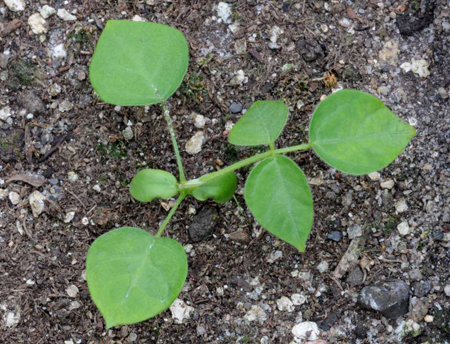Kudzu - Pueraria montana
Weed Seed - Kudzu (Pueraria montana)
Kudzu is known as one of the world's most invasive plants. It grows rapidly and forms dense, ropey mats over other vegetation and structures. The plants produce massive tuberous roots, making them difficult to control or eradicate. Kudzu reduces biodiversity and causes significant productivity losses to the forestry industry.
Where it's found
Native to eastern Asia, the only sustained population of kudzu known to be in Canada was discovered in southern Ontario in 2009. It has been intentionally introduced to many countries as an ornamental or forage plant, and as a means of erosion control.
There are severe infestations of kudzu in the southeastern United States. Kudzu grows in numerous habitats, including abandoned fields, grasslands, natural forests, pastures, plantations, roadsides, riverbanks and urban areas. It prefers full sunlight and tolerates a wide range of soil types.
What it looks like
Kudzu is a perennial, climbing vine with stems that can grow 10–30 m in length. Its hairy leaves are composed of three leaflets. Kudzu flowers are clustered, fragrant, reddish-purple, and pea-like in appearance.
How it spreads
Intentional planting of kudzu has been the most significant factor in its spread. Once established in an area, its rapid, vegetative growth allows it to spread locally. Movement of contaminated soil or equipment can result in new introductions.
Legislation
Kudzu is regulated as a pest in Canada under the Plant Protection Act. It is also listed as a prohibited noxious weed on the Weed Seeds Order, 2016 under the Seeds Act. Importation and domestic movement of regulated plants and their propagative parts is prohibited.
What you can do about it
- Leave natural items in their natural habitats.
- Avoid planting invasive plants in your garden.
- Use clean, high-quality seed that is certified if possible.
- Contact your local Canadian Food Inspection Agency (CFIA) office if you suspect you have found this invasive plant. The CFIA will follow up and determine if further action is needed.
Learn more about invasive species.

Attribution, Sam Brinker, Ontario Ministry of Natural Resources

Attribution: Stephen Darbyshire, Agriculture and Agri-Food Canada
- Date modified: